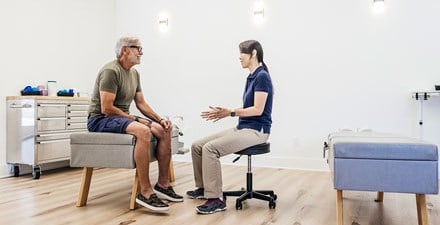
Female athlete triad is a condition that involves an imbalance among three factors:
- Energy available for physical activity.
- Quality and strength of bones.
- Menstrual cycle (periods).
The risk of developing the triad has increased with the high demand that athletics place on the female body. In addition, societal pressures for performance and image can contribute. For example, a runner may feel that restricting calories will help her run faster and earn her greater success.
The triad has negative effects on multiple body systems in the early stages. It also can lead to long-term effects on health and well-being as a woman ages.
The three measurable factors of female athlete triad are:
Energy availability. This is the amount of energy you get from your diet, minus the energy used during activity.
Bone mineral density, or BMD. When bones do not get needed nutrients or too much exercise stresses them, their structure can change and they may lose density (mass). This can lead to osteopenia (lower than normal BMD). Osteopenia can lead to osteoporosis (loss of bone strength that increases fracture risk).
Menstrual dysfunction. Menstrual cycles range from periods that are normal to irregular to absent in females from about ages 11 to 51 (menopause). Triad involves an irregular or absent cycle.
Symptoms related to the triad may develop over months or years and may include:
- Low energy during school, work, or exercise.
- Irregular or absent menstrual cycles.
- Stress-related bone injuries (stress reactions or fractures).
- Difficulty concentrating.
- An unexplained drop in performance.
- Changes in eating habits.
- Altered sleeping patterns.
- An unusually high focus on performance or image.
- Experiencing high levels of stress.
Physical therapists can identify the signs and symptoms of the female athlete triad. They will initiate a team approach to care, as needed. Physical therapists also understand the effects that the triad may have on prescribed exercise. Once symptoms resolve, your physical therapist will design a safe return-to-activity program to help you perform at your best.
Physical therapists are movement experts. They use the latest evidence to design treatment plans for each person’s needs and goals. They improve quality of life through hands-on care, patient education, and prescribed movement. You can contact a physical therapist directly for an evaluation. To find a physical therapist in your area, visit Find a PT .


